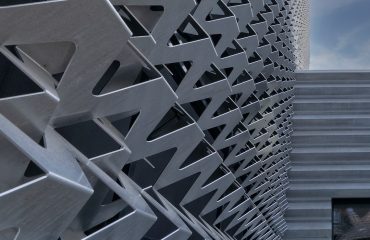body {
font-family: sans-serif;
line-height: 1.6;
}
h1, h2, h3 {
color: #333;
}
img {
max-width: 100%;
height: auto;
}
In the world of industrial design, the choice of structural elements significantly impacts a project’s success. While visually striking components often take center stage, the unsung heroes ensuring stability, durability, and efficiency are often the structural beams. Among these, IPN beams (Parallel Flange I-Beams) stand out as a versatile and robust solution for a wide range of applications. This comprehensive guide delves into the multifaceted world of IPN beams, exploring their properties, applications, and design considerations.
Understanding the Anatomy of IPN Beams
IPN beams, also known as parallel flange I-beams, are characterized by their parallel flanges (the horizontal top and bottom sections) and a web (the vertical connecting section). This distinct design offers several advantages. The parallel flanges provide exceptional resistance to bending moments, making them ideal for supporting heavy loads. The web efficiently transfers shear forces, contributing to the overall structural integrity. Unlike some other I-beam profiles, the parallel flanges of IPN beams simplify design and fabrication, allowing for easier connections and reduced material waste. The dimensions of IPN beams are standardized, ensuring consistency and simplifying calculations for engineers.
The precise dimensions – height, flange width, and web thickness – vary depending on the specific IPN designation, allowing engineers to select the optimal beam for a given load and span. This standardization is crucial for efficient procurement and construction.
Material Selection: Steel and Beyond
While steel is the most common material for IPN beams due to its high strength-to-weight ratio and versatility, other materials are finding their niche. Steel IPN beams offer excellent tensile and compressive strength, making them ideal for heavy-duty applications. However, the selection of steel grade is critical. Higher-strength steels, such as those with improved yield strength, can reduce the overall weight and cost of the structure while maintaining the required load-bearing capacity. The choice of steel grade often depends on factors like the environmental conditions and the specific loading requirements.
In specific applications, aluminum IPN beams are gaining traction. Aluminum offers a lighter alternative, crucial in applications where weight reduction is paramount, such as aerospace or transportation. However, aluminum’s lower strength compared to steel necessitates careful design considerations to ensure adequate load capacity.
Applications of IPN Beams in Industrial Design
The versatility of IPN beams makes them applicable across a broad spectrum of industrial design projects. Their strength and efficiency make them ideal for:
- Structural Frameworks: IPN beams form the backbone of many industrial structures, including warehouses, factories, and bridges. Their ability to support heavy loads and withstand significant stresses makes them an essential component in ensuring structural integrity.
- Industrial Machinery: In the design of heavy machinery, IPN beams provide the necessary rigidity and support for moving parts and mechanisms. Their robust construction ensures the longevity and reliability of the equipment.
- Transportation Infrastructure: From railway platforms to highway overpasses, IPN beams contribute to the safety and durability of transportation infrastructure. Their ability to handle dynamic loads and withstand environmental factors is crucial in these applications.
- Renewable Energy Structures: The increasing demand for renewable energy has led to a surge in the use of IPN beams in wind turbine towers and solar panel support structures. Their strength and stability are essential for withstanding the forces of nature.
Design Considerations for Optimal Performance
Effective utilization of IPN beams requires careful consideration of several design factors:
- Load Calculation: Accurate assessment of static and dynamic loads is paramount. This includes considering dead loads (the weight of the beam itself and any permanent fixtures), live loads (variable loads such as equipment or people), and environmental loads (wind, snow, seismic activity).
- Span and Support Conditions: The distance between supports (span) significantly impacts beam deflection and stress. The type of support (fixed, pinned, or simply supported) also influences the design and selection of the appropriate IPN beam.
- Connection Design: Robust and efficient connections are crucial for transferring loads from the beam to the supporting structure. Welding, bolting, or a combination of both are common methods, each with its own advantages and limitations.
- Corrosion Protection: In many industrial environments, corrosion is a significant concern. Proper surface treatment, such as galvanization or painting, is essential to extend the lifespan of IPN beams and prevent structural degradation.
Future Trends in IPN Beam Applications
Ongoing advancements in materials science and engineering are shaping the future of IPN beam applications. The development of high-strength, lightweight steels and composite materials offers the potential for even more efficient and sustainable structural solutions. Furthermore, the integration of smart sensors and monitoring systems allows for real-time assessment of beam performance, enabling predictive maintenance and enhanced safety. Advanced computational modeling and simulation techniques are optimizing beam design, leading to reduced material consumption and improved structural efficiency. The exploration of sustainable manufacturing processes, such as reducing carbon emissions during steel production, aligns with the growing emphasis on environmentally friendly construction practices.
In conclusion, IPN beams represent a crucial element in modern industrial design, offering strength, efficiency, and versatility across numerous applications. Understanding their properties, design considerations, and future trends is essential for engineers and designers seeking to create robust, reliable, and sustainable structures.
SEO Tags:
IPN Beams, Parallel Flange I-Beams, Industrial Design, Structural Engineering, Steel Beams




